Stand up pouches seem simple, but most companies miss their biggest advantage. The real value isn’t just flexible packaging1—it’s solving your entire supply chain challenge2 while cutting costs by 40%.
Stand up pouches are used in food, beverages, pet products, cosmetics, pharmaceuticals, automotive fluids, and industrial applications. They reduce shipping costs3 by 50%, extend shelf life through superior barrier properties, and offer features like resealable zippers4, spouts, and child-resistant closures5. These pouches work for both liquid and solid products, with capacities from 50ml to 5 liters.
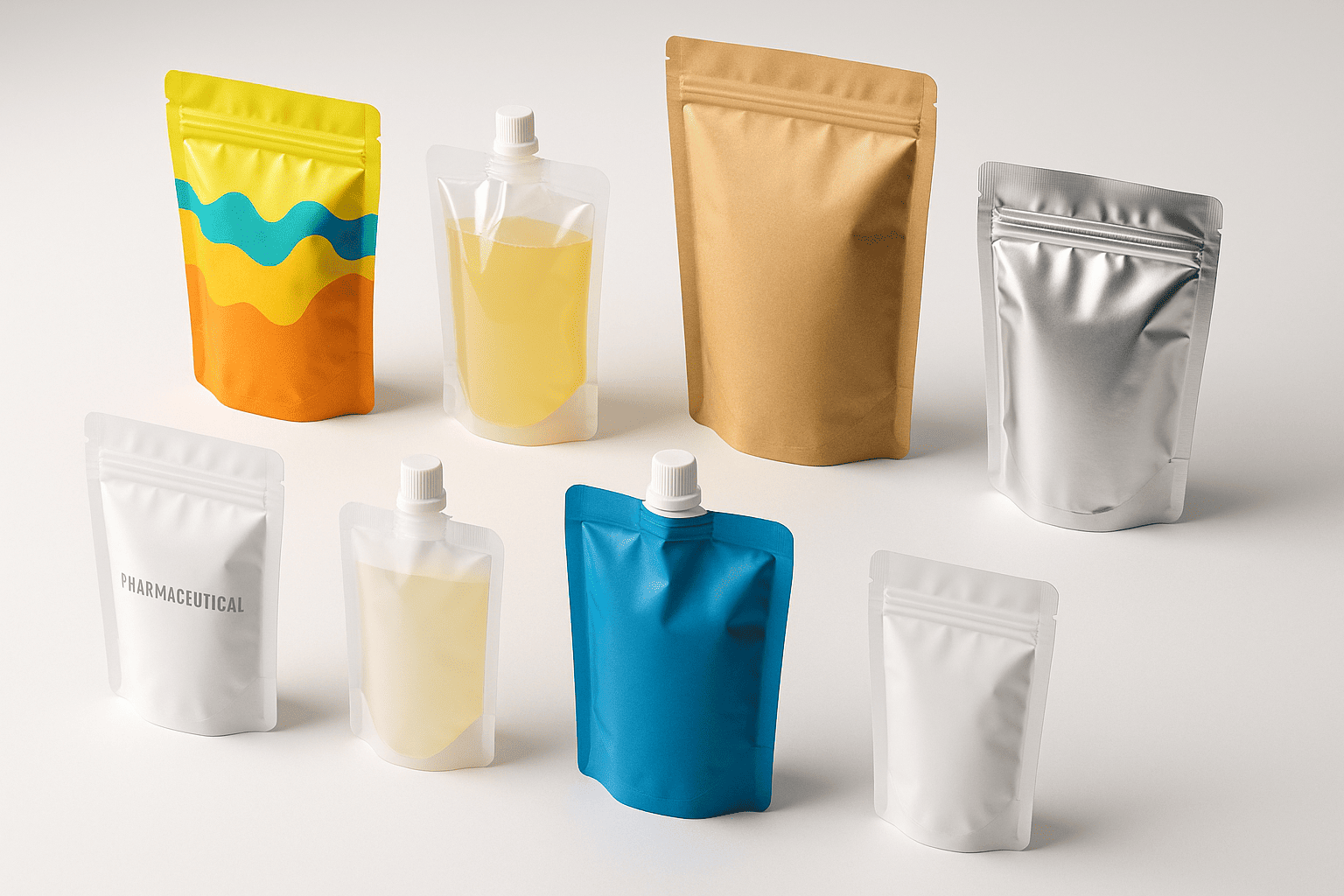
I’ve spent years helping brands switch from rigid packaging to stand up pouches. The transformation goes beyond cost savings. It changes how products move through the supply chain, how consumers interact with brands, and how companies meet sustainability goals.
Why Do Food and Beverage Companies Choose Stand Up Pouches?
Food manufacturers lose millions annually to packaging failures. Most don’t realize their rigid containers cause 30% of these losses through breakage and spoilage.
Food and beverage companies use stand up pouches because they reduce product damage by 80% and extend shelf life by 6-12 months. Coffee roasters rely on degassing valves6 that release CO2 while blocking oxygen. Snack brands use multi-layer barriers7 that keep products crispy for months. Liquid products benefit from spouts that eliminate spills and allow precise pouring.
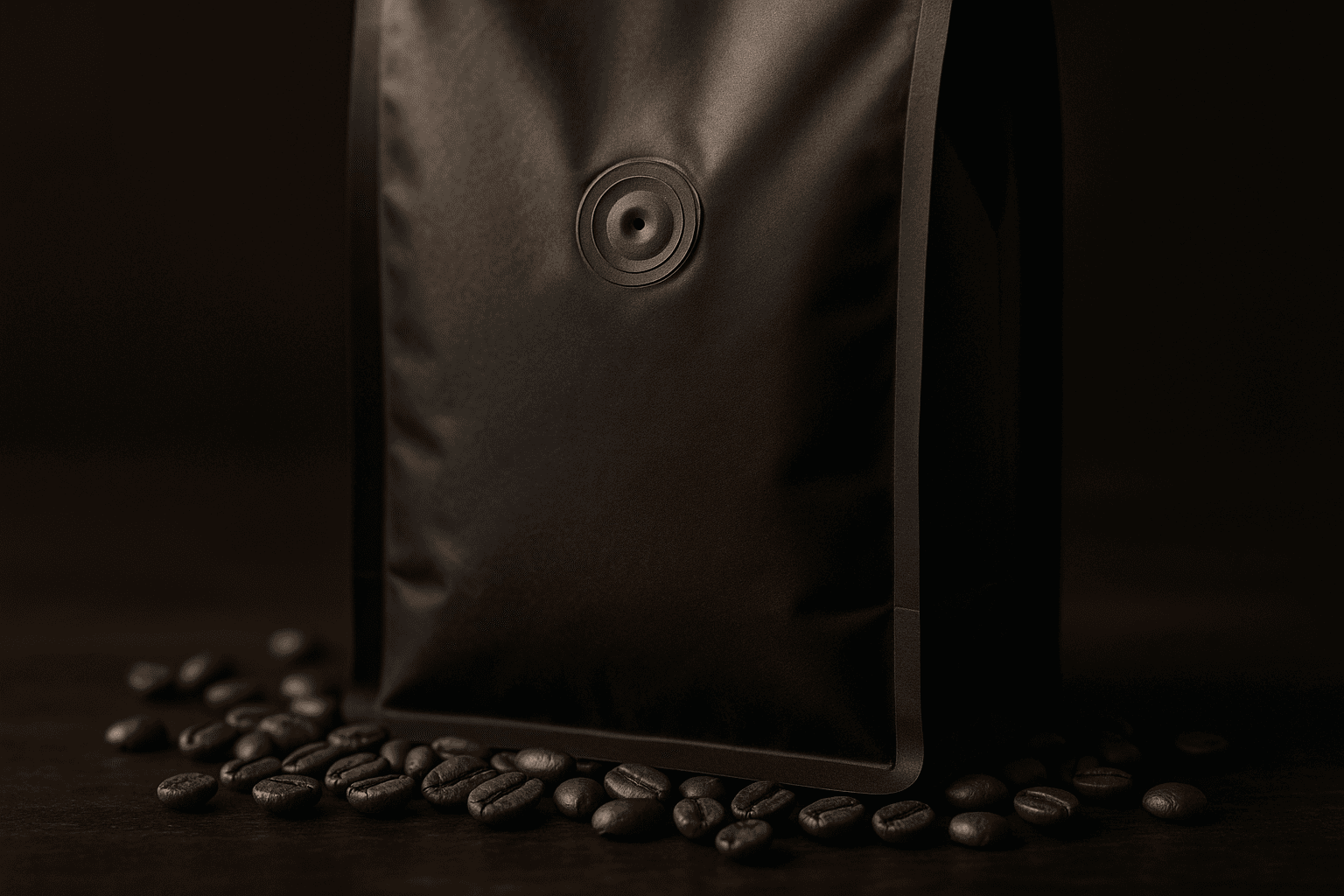
I recently worked with a specialty coffee roaster who struggled with stale beans reaching customers. Despite premium bean quality, their sales declined due to staleness issues with traditional packaging. Our valve pouches solved this immediately – their beans now stay fresh for 8 weeks instead of 2. The problem wasn’t their coffee quality. Their previous packaging couldn’t handle the natural CO2 release from fresh-roasted beans.
Coffee and Tea Applications
Coffee requires specific barrier properties. The pouch needs an aluminum layer to block light and oxygen. A one-way degassing valve lets CO2 escape without letting air in. This combination keeps coffee fresh for 12 months versus 3 months in standard bags.
Tea faces different challenges. Moisture is the enemy. I recommend pouches with moisture barriers8 below 0.01 g/m²/day. This specification protects delicate tea leaves from humidity damage.
Liquid Food Products
Sauces and soups need different pouch structures. The key is selecting the right spout size. A 10mm spout works for thin liquids like broths. Thicker sauces need 15-20mm spouts to prevent clogging.
Baby food brands choose stand up pouches for safety reasons. The pouches can’t shatter like glass jars. Parents appreciate the lightweight design for on-the-go feeding.
How Do Pet Food Brands Benefit from Stand Up Pouches?
Pet owners judge product quality by packaging feel. A poor zipper experience makes them question the food inside.
Pet food brands use stand up pouches to improve customer satisfaction and reduce returns. The pouches offer superior reclosure systems that maintain freshness between feedings. Large-format pouches up to 20 pounds replace heavy bags that tear easily. Transparent windows let consumers see product quality before purchase, reducing complaint rates by 40%.
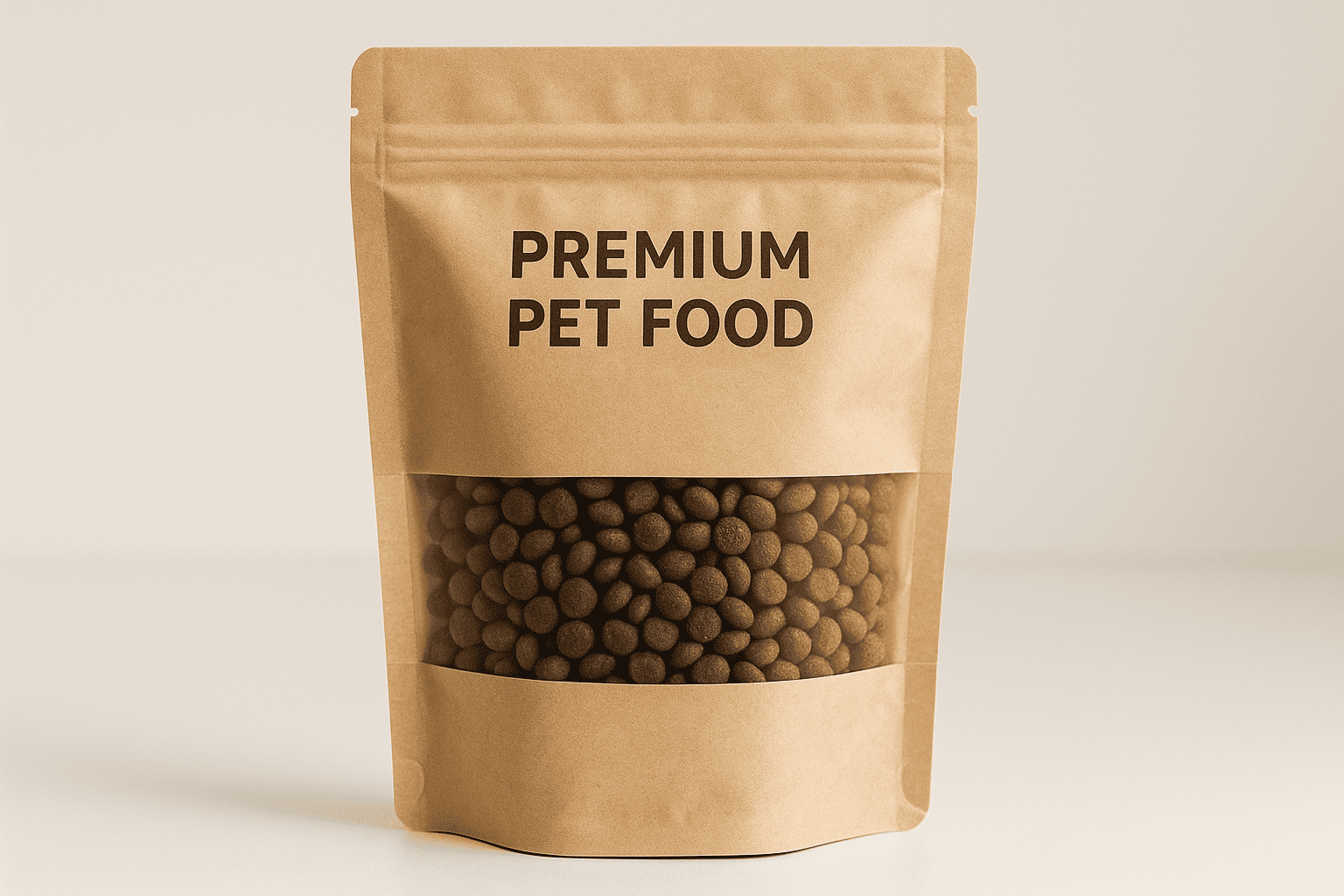
The pet food industry faces unique challenges. Products contain oils that can compromise seal integrity. Standard pouches fail within weeks. I developed oil-resistant seal layers9 that maintain strength even with high-fat formulations.
Wet Pet Food Solutions
Wet pet food requires retort processing10 at 121°C. Not all pouches survive this heat. I specify retort-grade materials with specialized adhesives. These pouches maintain seal strength after sterilization.
Single-serve portions drive the wet food market. Pet owners want convenience without waste. Stand up pouches11 in 85g and 100g sizes match feeding portions perfectly.
Treat and Supplement Packaging
Pet treats need different features than food. The priority is portion control. I recommend pouches with clear portion markers or individual compartments. This helps owners avoid overfeeding.
Supplements require child-resistant features. Pets can’t open them, but neither can children. The mechanism uses a dual-action zipper12 that requires specific movements to open.
What Makes Stand Up Pouches Perfect for Cosmetics and Personal Care?
Beauty brands compete on shelf appeal. Standard bottles blend together. Stand up pouches offer unlimited design possibilities.
Cosmetics companies use stand up pouches to reduce packaging costs by 60% while improving brand differentiation. Pouches allow 360-degree printing for maximum visual impact. Airless pump systems prevent product oxidation. Travel-sized pouches meet TSA requirements while using 70% less plastic than rigid containers.
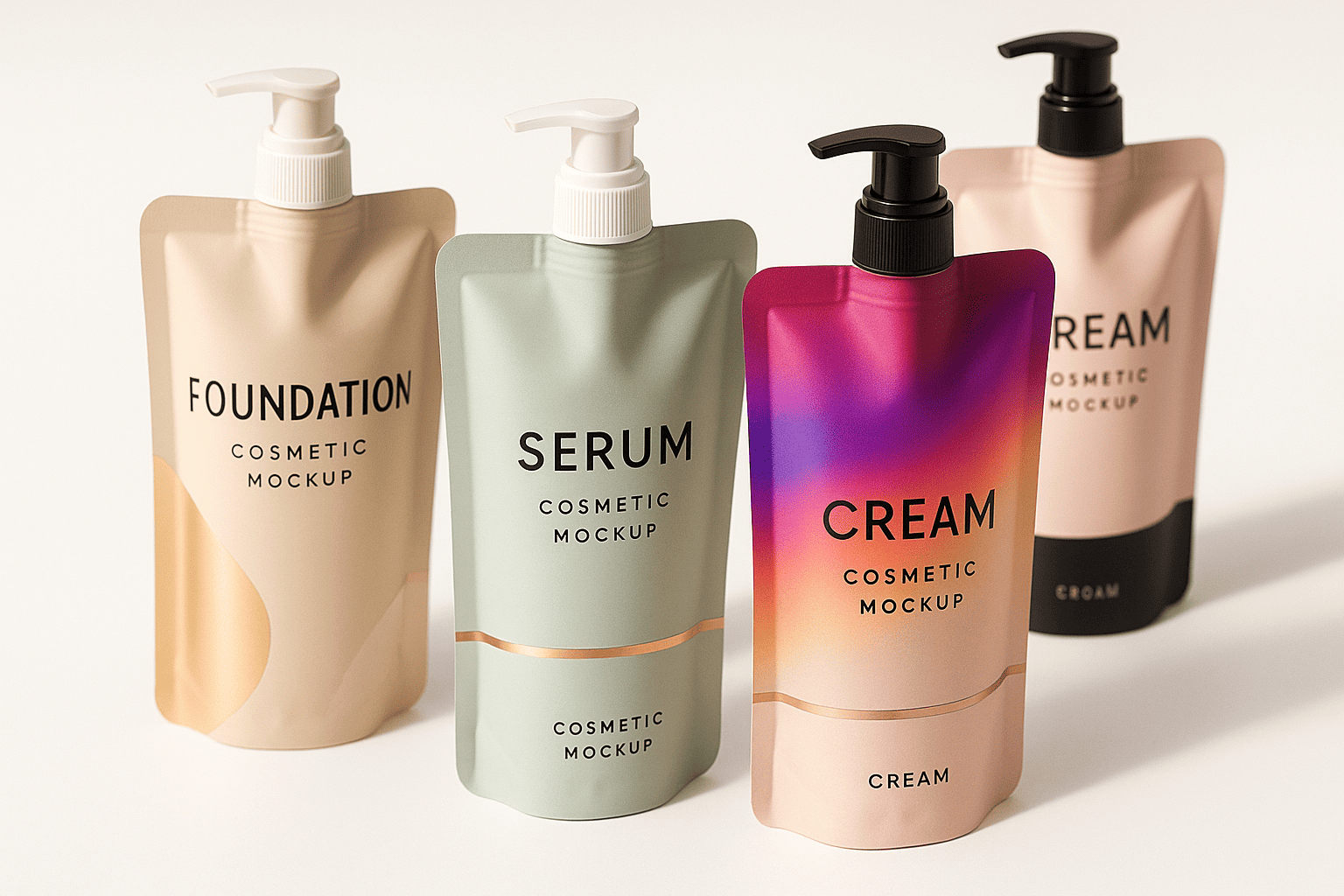
One established cosmetics manufacturer worried pouches looked ‘cheap’ compared to glass jars. Six months after launch, their pouch products outsold traditional packaging 3:1 on retail shelves. The beauty industry resists change, but economics drive adoption. A 100ml cream in a glass jar costs $3.50 to package. The same product in a stand up pouch costs $1.20.
Liquid Cosmetics Applications
Foundations and serums need precise dispensing. I integrate pump mechanisms that deliver 0.5ml doses consistently. This prevents waste and ensures proper application amounts.
UV protection matters for active ingredients. I use metallized barriers that block 99% of UV light. This extends product stability from 18 to 30 months.
Powder and Solid Products
Powder products create static challenges. Static causes powder to cling inside pouches. I add anti-static coatings that ensure complete product discharge.
Solid items like soap bars need breathable packaging. Micro-perforations allow moisture escape while maintaining product integrity. The perforations are invisible but prevent mold growth.
Why Are Pharmaceutical Companies Switching to Stand Up Pouches?
Medicine packaging errors13 cause 7,000 deaths annually in the US alone. Better packaging saves lives.
Pharmaceutical companies adopt stand up pouches for superior child resistance and senior-friendly access. The pouches meet FDA and EU regulations for drug packaging. Multi-dose pouches reduce medication errors through clear labeling spaces. Unit-dose strips inside pouches improve compliance by 45% compared to bottles.
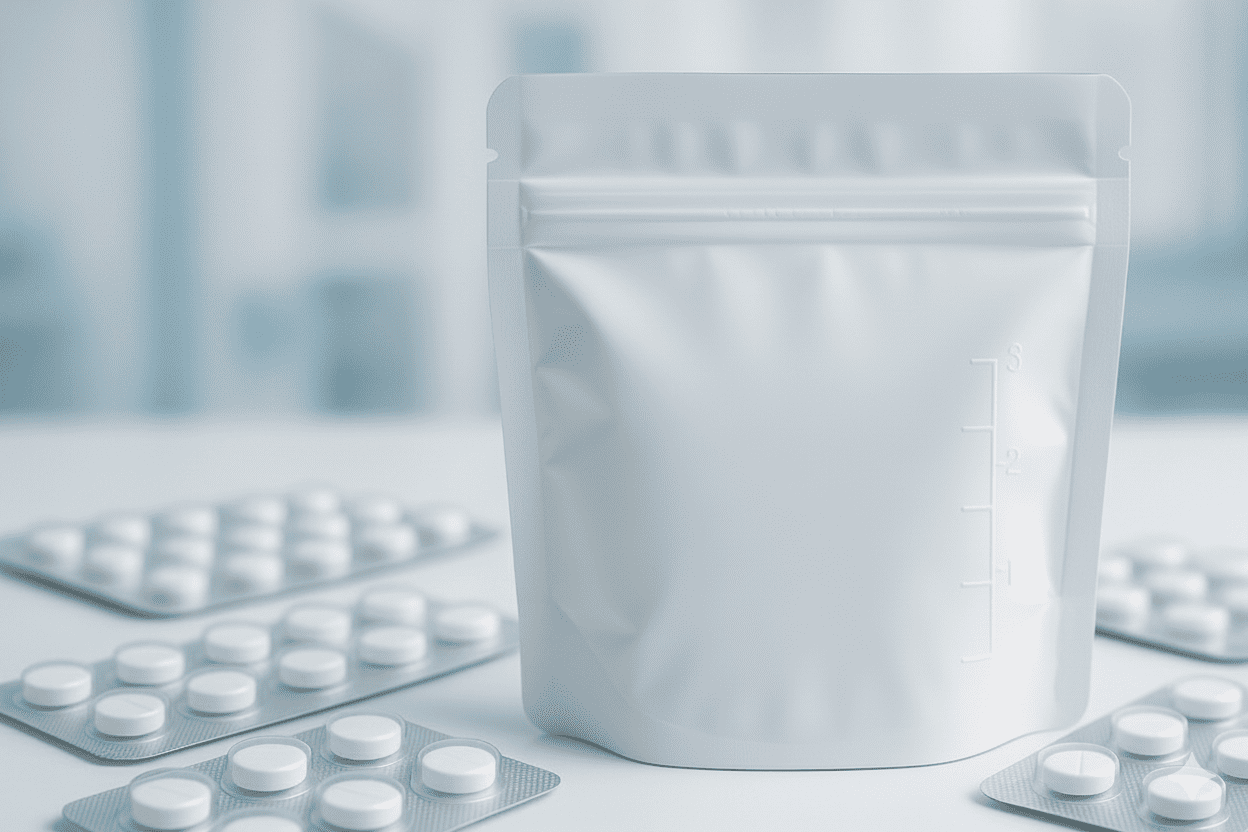
Pharmaceutical packaging demands precision. A single contamination incident destroys brand trust. I work with clean room facilities that meet ISO Class 7 standards.
Supplement Packaging Requirements
Vitamins degrade from moisture exposure. Standard pouches allow 2-3% moisture ingress monthly. I specify pouches with moisture barriers below 0.001 g/m²/day. This maintains potency throughout shelf life14.
Probiotics need even stricter protection. These products require nitrogen flushing and oxygen absorbers. The pouch must maintain less than 0.1% oxygen levels for 24 months.
Over-the-Counter Medicine
OTC medicines need clear dosing information. Stand up pouches offer 40% more printing space than bottles. This allows larger fonts for dosing instructions.
Liquid medicines benefit from integrated measuring cups. I design pouches with detachable dosing cups molded into the structure. This ensures accurate dosing every time.
How Do Automotive Fluids Benefit from Stand Up Pouches?
The automotive aftermarket loses $2 billion annually to damaged rigid containers. Plastic bottles crack. Metal cans dent. Stand up pouches11 survive.
Automotive companies use stand up pouches to eliminate warehouse damage claims and reduce shipping weight by 85%. Motor oil pouches include precision spouts that prevent spills during pouring. Brake fluid pouches offer superior chemical resistance compared to plastic bottles. The flexible design allows pouches to fit in tight engine compartments where rigid containers can’t reach.
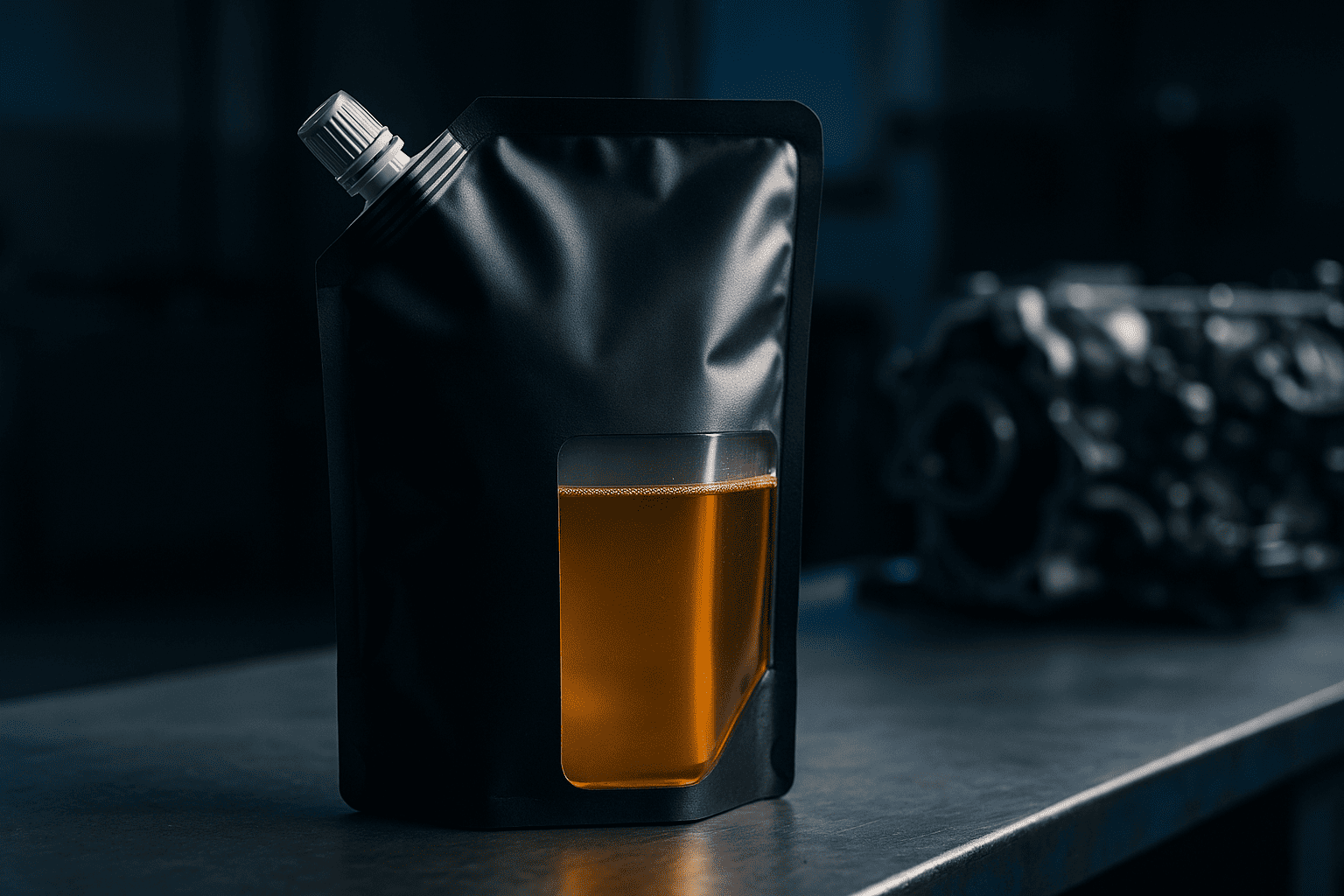
I discovered this market opportunity by accident. A mechanic showed me his storage room filled with cracked oil bottles leaking onto expensive inventory. After switching to our pouches, his damage claims dropped to zero and storage efficiency increased 40%. Traditional bottle manufacturers can’t match pouch performance for chemicals.
Motor Oil and Lubricants
Motor oil requires specific barrier properties. The pouch must resist hydrocarbon penetration. I use EVOH barriers that prevent oil migration through the film.
Temperature resistance matters too. Engine compartments reach 100°C. The pouches maintain integrity from -40°C to 120°C without leaking.
Specialty Fluids
Windshield washer fluid presents different challenges. The product contains methanol that attacks standard films. I specify alcohol-resistant barriers that prevent degradation.
Coolant packaging needs color coding for safety. Different coolant types can’t mix. Clear windows in pouches show fluid color instantly, preventing costly mistakes.
What Industrial Applications Use Stand Up Pouches?
Industrial buyers care about one thing: reliability. A packaging failure stops production lines.
Industrial companies use stand up pouches for chemicals, adhesives, coatings, and cleaning products. The pouches reduce workplace injuries by 60% compared to heavy rigid containers. Portion-control pouches eliminate measuring errors in manufacturing processes. Chemical-resistant films handle pH levels from 1 to 14 without degradation.
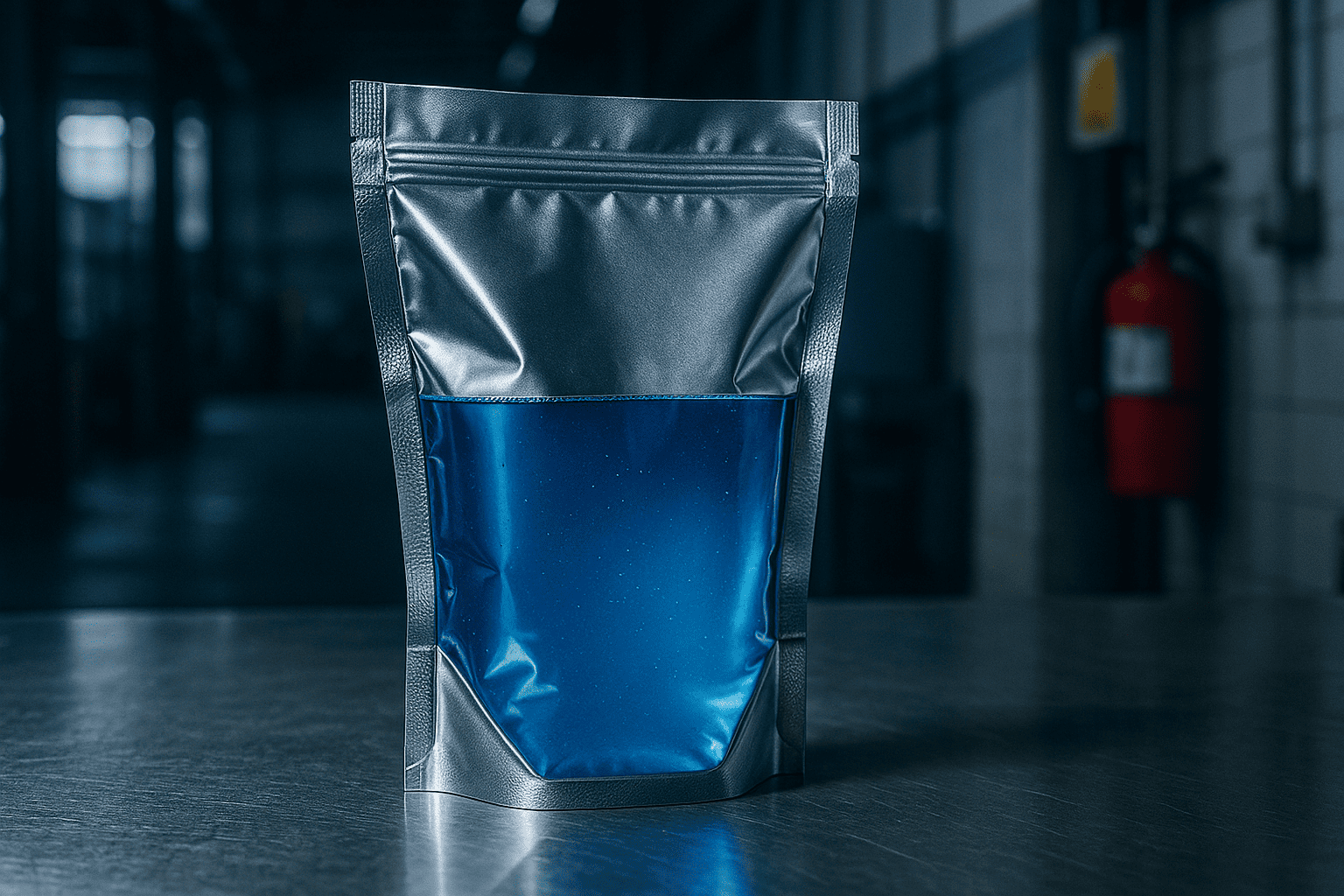
Industrial applications push packaging limits. Products are aggressive. Environments are harsh. Standard pouches fail quickly.
Chemical Packaging Solutions
Acids and bases destroy regular packaging. I specify pouches with fluoropolymer linings15. These materials resist even concentrated sulfuric acid.
Safety labeling is critical. Industrial pouches need GHS compliant labels16 that won’t fade or peel. I use direct printing that bonds permanently with the film.
Adhesive and Sealant Applications
Two-part adhesives need special packaging. The components must stay separate until use. I design dual-chamber pouches with a breakable seal between sections.
Construction adhesives are thick. Standard spouts17 clog immediately. I recommend 25mm spouts with cutting guides for controlled dispensing.
Common Questions About Stand Up Pouch Applications
1. Can stand up pouches handle hot filling?
Yes, special heat-resistant pouches withstand filling temperatures up to 95°C. The key is using polypropylene-based structures with heat-stable seals. Cool filling below 60°C extends pouch options significantly.
2. What’s the maximum capacity for stand up pouches?
Stand up pouches range from 50ml to 25 liters. Most applications use 100ml to 5-liter sizes. Larger pouches need reinforced handles and stronger bottom gussets for stability.
3. How do stand up pouches compare to rigid containers for sustainability?
Stand up pouches use 75% less material than rigid containers. They generate 80% fewer carbon emissions during transport. Modern mono-material pouches18 are fully recyclable through store drop-off programs.
4. Can stand up pouches be customized for unique products?
Absolutely. I customize barrier properties, closure systems, and pouch shapes for specific products. Digital printing allows full customization even for small runs of 1,000 units.
Conclusion
Stand up pouches transform how products reach consumers. They solve supply chain problems, reduce costs, and improve sustainability. The applications span every industry because the benefits are universal. Smart companies recognize pouches aren’t just packages—they’re competitive advantages.
-
Learn about flexible packaging and how it can optimize your supply chain and reduce costs. ↩
-
Discover innovative solutions to streamline your supply chain and improve efficiency. ↩
-
Find out how the right packaging can significantly lower your shipping expenses. ↩
-
Explore the advantages of resealable zippers for maintaining product freshness. ↩
-
Discover the significance of child-resistant closures in ensuring product safety. ↩
-
Learn about the technology behind degassing valves and their impact on coffee freshness. ↩
-
Find out how multi-layer barriers keep products fresh and extend their shelf life. ↩
-
Understand how moisture barriers protect sensitive products from humidity. ↩
-
Discover how oil-resistant seal layers enhance the integrity of pet food packaging. ↩
-
Explore the retort processing method and its importance for food safety. ↩
-
Explore how stand up pouches can revolutionize your packaging strategy and enhance product appeal. ↩ ↩
-
Find out how dual-action zippers enhance safety and usability in packaging. ↩
-
Understand the critical impact of packaging errors on safety and compliance. ↩
-
Understand the key elements that influence product shelf life and how to extend it. ↩
-
Explore how fluoropolymer linings protect against aggressive chemicals. ↩
-
Understand the importance of GHS compliant labels for safety in industrial applications. ↩
-
Learn how spouts enhance user experience and prevent spills in liquid products. ↩
-
Learn about mono-material pouches and their role in sustainable packaging solutions. ↩

